Last Updated on

Did you know that keyword research can help you make money off your website or blog? No? Keep readin’, friend!
You may have started up your blog because at the time it was a fun side hobby. But now that you’re more serious about it (and found out that you can make money off your blog) you’re beginning to wonder just how you can start making that money!
One of the ways you can monetize that blog of yours is through traffic. More traffic = more potential readers which is good for:
- affiliate marketing
- sponsored blog posts
- advertising and banner ads
- growing your email list
- obtaining more clients
There are various ways you can increase your traffic such as paid advertising, social media marketing or search engines optimization (SEO), which is the process of obtaining natural/organic traffic from search engines.
When I first started Dana Nicole Designs, it was just a blog. I was still learning graphic design and web design and hadn’t started taking on paying clients quite yet.
I used my blog as a way to learn more about online marketing and position myself as a leader in my niche.
When the time came for me to launch my design studio, my blog served as a huge reason as to why I was able to make a living doing what I loved.
Now, let’s talk about SEO, and more specifically keyword research, and how you can use keyword research to start making money.
SEO makes most people run in the opposite direction and I get it! It’s confusing for someone who isn’t quite sure what it is or how to implement it.
But it really doesn’t need to be that scary or confusing. And today I’m going to break down how you can use keyword research to start driving traffic from search engines to your blog, because with more traffic comes more opportunities to monetize!
I am going to be going through 3 ways that you can use keyword research to help you focus your blog monetization strategy through:
- building a high traffic blog
- creating popular content upgrades
- driving traffic to affiliate links
Set Up Google Search Console and Google Analytics
We have to get some administrative stuff out of the way. Your first step is to set up Google Search Console and Google Analytics. We will use the search console and your analytics to gauge how you are doing!
If you don’t have either, see the links below for a detailed explanation of how you can set up the following (clicking the links will open a new window so you don’t lose this page):
Having Google Analytics and Google Search Console will allow you to go back and see how well your site is ranking for your chosen keywords.
Build A High Traffic Blog
Having a blog that gets lots of targeted traffic is good on all fronts. A popular blog will allow you to charge more for sponsored blog content, generate more revenue through ads and earn more money through affiliate marketing (just to name a few benefits associated with it).
In order to get more traffic, you can use keyword research to try and rank higher in search engine results.
To do some basic keyword research in order to get your blog posts ranking higher, you’ll want to use Google Keyword Planner.
To access the Keyword Planner tool, you will need to create a Google Adwords account. The Keyword Planner tool is exclusive for those members who advertise through Google, so to access it you will have to create an ad. If you want, you can create an ad with a budget of $0.01, and cancel it right after.
This will allow you to use Google’s Keyword Planner without having to advertise.
The Keyword Planner is a great tool to help you generate ideas on what you can write about and what your audience is searching for.
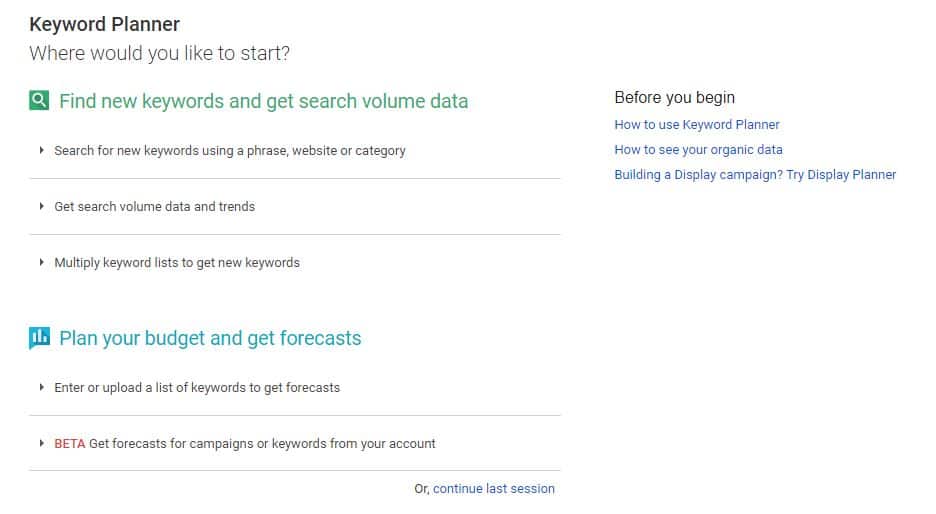
Your Keyword Planner will look like the above. Head into “Search for new keywords using a phrase, website or category” and enter an initial keyword to start.
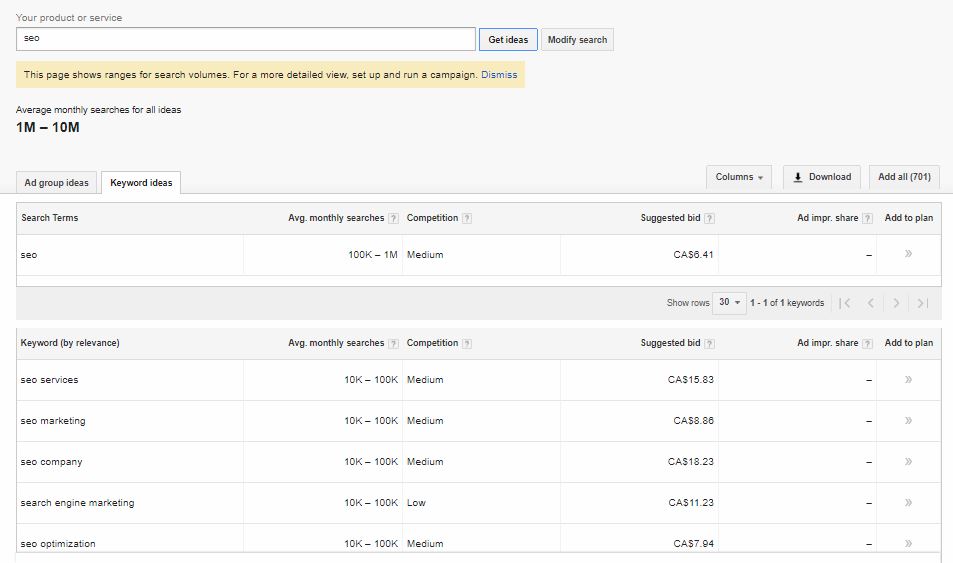
This will get you thinking about other keywords that are related to the topic you want to write about. To select a target keyword, look through the list, keeping a few things in mind.
First, you will want to find a keyword that has a low competition but has a decent amount of monthly searches. This can be hard to find on topics that are popular and competitive (such as “SEO” above).
Secondly, this data is meant for people who are planning to advertise through Google.
The competition doesn’t mean how competitive the keyword is within search results, but rather how competitive it is among advertisers, although, in most cases, if a word is competitive among advertisers it will likely be competitive to rank for organically as well.
Generate A List Of Longtail Keywords
A longtail keyword is one that is 3-4 words long (or longer) and is going to be easier to rank for as it is more specific and likely to have less competition.
In the above example, it would be nearly impossible to rank on page 1 of Google for “SEO”, although when I look deeper I can see that the longtail keyword “simple search engine optimization” has is less competitive and averages 100-1k searches per month.
Knowing that, I can then begin to craft a blog post around the term “simple search engine optimization” that I can be more likely to rank for, and in turn, get more traffic to my blog.
Another great thing about longtail keywords is that they are more likely to convert.
Take for example the keyword “sweater”. When someone searches for a sweater, they could be looking for anything and are likely just starting the buying process.
However, if they search for “medium purple women’s sweater” they are looking for something very specific and are more likely to buy if you have the product they are searching for.
Write a 2,000 Word Blog Post
Now that you’ve selected your keyword(s), you will want to write a blog post that will be able to rank on page one of Google.
Blogging is highly competitive and you will want to ensure you are putting out the very best content you can.
Blog posts and articles that are around 2,000 words tend to rank on the first page according to numerous studies. This doesn’t mean you want to fill your posts with superfluous information, however. Your posts should still be useful for your audience.
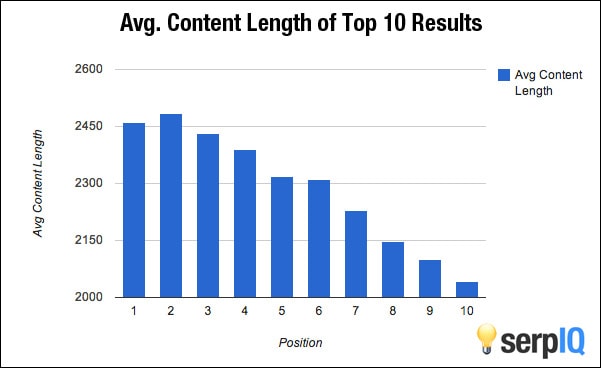
Longer blog posts are often harder for readers to digest so you will want to make sure that you have optimized your blog post’s readability but including headers, sub headers, bulleted lists, bolded words/phrases and short paragraphs.
Create Popular Freebies
How many times have you heard someone say “the money is in the list”?
(PS no biggie if you haven’t actually heard anyone say that, because I’m going to say it anyways).
The money is in the list!
As a blogger, one of your main priorities should be to grow your email list. A targeted email list gives you a way to connect with thousands of your customers who will be highly likely to convert when you email them about offers you have, either through affiliate links or other products you are selling.
An excellent way to grow your email list is to offer some kind of additional content upgrade or “freebie” for your blog posts.
By using keyword research, you can begin to craft freebies that are popular within your niche.
To start, begin by selecting a broad topic you’d like to write about. Next, head over to www.pinterest.com and in the search bar type in “free your topic“.
As you can see below, I’ve searched for “free wedding photography”. In this example, the topic we are starting with is “wedding photography”.
Pinterest then pulls up popular search results which can help give you an idea of what types of content is popular within your audience!
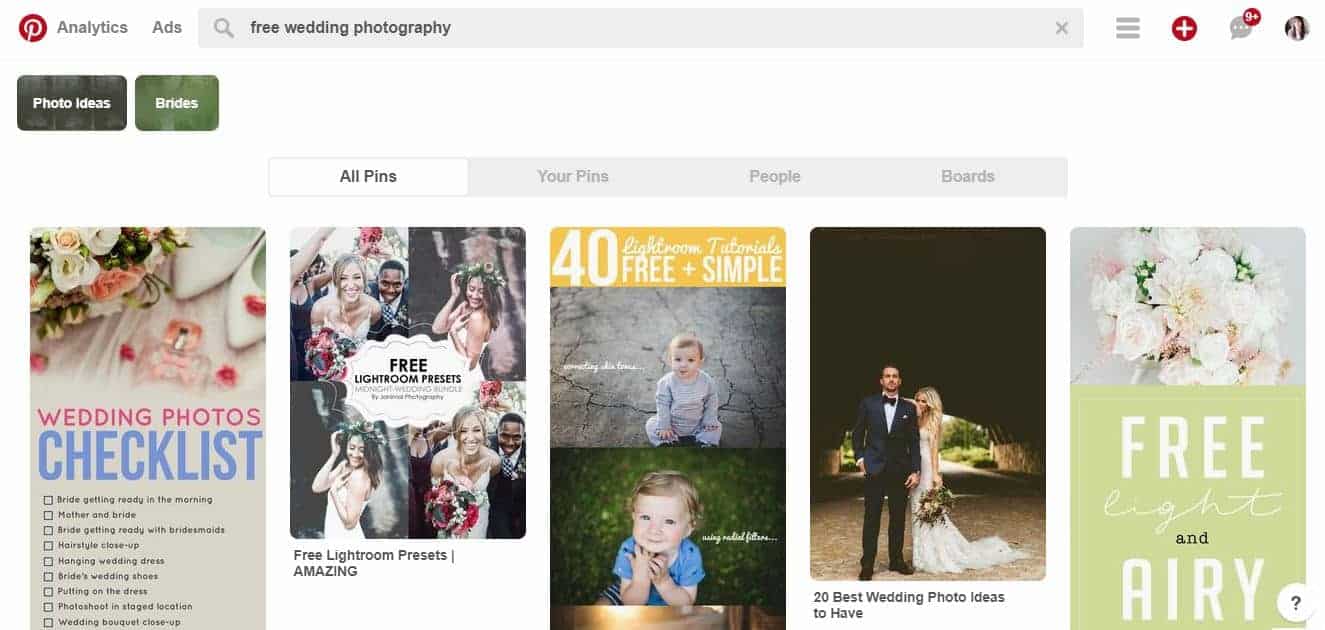
As you can see, there are various tutorials, checklists and Lightroom presets.
Once you have an idea as to what type of freebie you’d like to create, head over to the keyword planner and start to come up with a longtail keyword that you could use to target in order to drive the most traffic to your blog post.
The more targeted traffic you can get, the more likely your visitors will convert.
Affiliate Marketing
An affiliate link is a unique link that you are given for a particular product. When one of your readers clicks on that link and makes a purchase through it, you earn a small commission.
Commissions of $1-$5 or so can seem small at first, but if you are able to make 100 sales per month that is an extra couple hundred dollars you can earn just from affiliate marketing.
One affiliate program that is worth checking out is Amazon’s.
Now, affiliate marketing is tough, but not impossible by any means! It’s highly competitive and you don’t want to come across as spammy (or you will hurt your SEO) so you need to pick your products selectively that you want to recommend, and you want to make sure you are only recommending products that will benefit your audience!
To begin, go over to Answer The Public. On Answer The Public, you can see what types of queries people are searching for in regards to particular topics.
For example, if you are a beauty blogger and you’d like to do a post on eyeshadow, if you search “eyeshadow” on Answer The Public you can see a TON of different queries that people are searching for in relation to eyeshadow.
Here is a sample of what comes up:
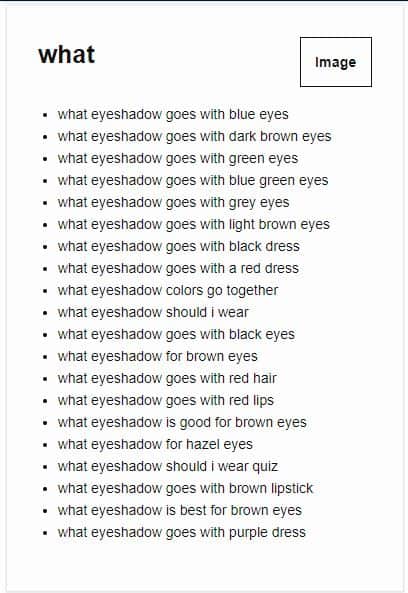
Knowing this, you could then create a blog post crafted to answer anyone of these questions, such as a list of your favourite eyeshadows that pair well with a red dress.
The best part about this is that you know people have searched for these queries in the past and are likely to search for them again, and since they are longtail keywords, they will produce highly converting traffic.
Another highly effective way to include your affiliate links is by creating a resource page. Many people want to know what products you use everyday to help your business run smoothly, and by creating a resource list you are able to promote specific products without coming across as overly-promotional.
Keep in mind not all the products I have listed in my resource page are affiliate links – some of the products I’ve included are just there because I simply love them and know my audience would benefit from using them.
If you are going to use affiliate marketing, you will want to understand why you should use no-follow affiliate links for SEO purposes.
——————
Creating a profitable blog takes time and lots of work, however, if you employ the strategies above you will be able to see your work pay off. To summarize, keyword research can help you make money blogging by:
- driving targeted traffic to your blog
- creating content upgrades that your audience wants
- driving traffic to your affiliate links
Have you ever used keyword research to help monetize your blog? Let me know in the comments below!
This article may include affiliate links. As an Amazon Associate I earn from qualifying purchases.

Dana Nicole is an award-winning freelance writer for MarTech/SaaS who was rated one of the best SaaS writers by Software World. She specializes in writing engaging content that ranks high in search engines and has been featured in publications like Semrush, ConvertKit, and Hotjar.
Dana holds a Bachelor’s degree in Business Administration and has over 15 years of experience working alongside national brands in their marketing departments.
When Dana’s not working, you can find her dancing en pointe, cooking up new recipes, and exploring the great outdoors with her two big dogs.

